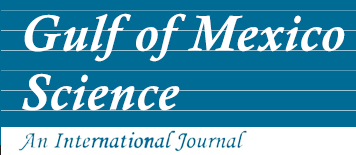Alternate Title
Food Resource Utilization in the Sea Urchin Lytechinus variegatus in Contrasting Shallow-Water Microhabits of Saint Joseph Bay, Florida
Abstract
The feeding activity and relative percentages of different foods consumed by the regular sea urchin Lytechinus variegatus in three contrasting microhabitats were examined over a 2-yr period in Saint Joseph Bay, FL, at its northern limits of distribution. In 1993, feeding activity levels of individuals at a site dominated by the seagrass Thalassia testudinum were higher on average than at a site characterized mostly by sand substrates alone or a site dominated by the seagrass Syringodium filiforme. No other significant difference in feeding activity levels was detected between sites or years. Feeding activity was markedly reduced at all sites in winter months of both years. Lytechinus variegatus in Saint Joseph Bay displayed generalist feeding behaviors with diets that appeared to be governed by the availability and palatability of food items. Foods consumed by sea urchins varied seasonally at each site, apparently in response to changes in food availability. Some seasonally abundant algae (e.g., the fleshy red alga Laurencia porteaur) were not consumed, presumably due to chemical defenses. Seasonal depressions in resource utilization and changes in food types likely impact aspects of growth and reproduction of individuals comprising subpopulations of L. variegatus that fringe on the northern limits of their biogeographic distribution.
Recommended Citation
Beddingfield, S. D. and J. B. McClintock.
1999.
Food Resource Utilization in the Sea Urchin Lytechinus variegatus in Contrasting Shallow-Water Microhabits of Saint Joseph Bay, Florida.
Gulf of Mexico Science
17
(1).
Retrieved from https://aquila.usm.edu/goms/vol17/iss1/3

